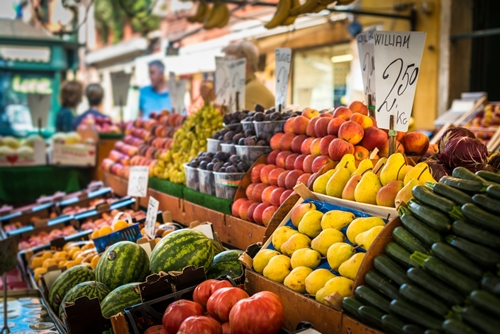
Health Food Heroes #2 – Cranberries and Avocado
Last time on Health Food Heroes we covered kale and acai berry. Today our two health food candidates are cranberries and avocado.
Whether you’re a healthy eating enthusiast or you’re just dipping your toes into the world of good food choices, read on and you may just learn something new about these food heroes which will make you pop them into your produce bag.
1. Cranberry
What is it?
Cranberries are a small, red berry which grow on shrubs throughout Northern America and Europe with a signature ‘tart’ taste. Harvest season for Northern Hemisphere growers happens in their winter months, which means Aussies can enjoy fresh cranberries in the spring and summer from September to December, although frozen cranberries are available all year round.
What makes it a health food hero?
These berries are low in calories and are high in vitamin C and fibre, explains writer for WebMD, Jeanie Lerche Davis. Ms Davis also goes on to note that cranberries are one of the highest antioxidant contents of all fruit and vegetables, with the exception of the humble blueberry.
As well as being known for their antioxidant properties, cranberries seem to have another ace up their sleeve as a natural method of boosting HDL (otherwise known as good cholesterol), as found by a study published in the British Journal of Nutrition.
What can I do with cranberry?
Cranberry juice makes for a crisp, refreshing drink – definitely consider keeping some in your fridge and pouring it into your drink bottle on a hot day. Frozen cranberries make a great addition to a smoothie too, while dried cranberries can make for a great healthy snack or an addition to cereal or home baking.
2. Avocado
What is it?
Just to blow your mind, avocado is actually another berry. The fruit of a flowering tree native to Mexico and Central America, to be precise. However as you probably know, avocado is mostly eaten as a vegetable.
Australian Avocados tells us that the first seeds arrived in Australia in 1840, where they were planted in the Royal Botanical Gardens in Sydney. The perennial fruit is most abundantly available in Australia from March to November, recognisable by its pear shape and dark green, textured skin which protects the creamy flesh and large seed inside.
What makes it a health food hero?
Avocados contain vitamins B, C and E, for starters, and are a source of fibre, which means we feel fuller for longer. They’re also high in folate, lutein and potassium, which cover a range of disease fighting and health supporting benefits. Furthermore, while avocados are known to be quite fatty, they actually contain monounsaturated fat, which helps lower cholesterol, according to the American Heart Association.
What can I do with avocado?
You can make guacamole (a crime not to, really) with a touch of salt and citrus juice, or chop it to add into salads or sandwiches for a creamy element which can replace your regular spreads. Avocados are tasty on toast, and are great at breakfast time due to their fibre. Eggs benedict with avocado anyone?


